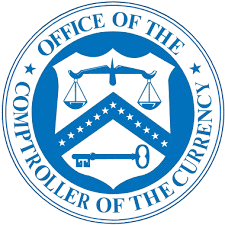Today, I want to review the OCC Consent Order to see the bank’s requirements. This is separate from the DOJ requirements under the Bank’s Plea Agreement(s) and the FinCEN Consent. Further, the DOJ and OCC have mandated separate monitors under their attendant settlement agreements. FinCEN’s Order imposes a four-year independent monitorship, and the DOJ Plea Agreement a 3-year Monitorship. As Matt Kelly noted in Radical Compliance, the remediation steps include:
- Establishing a dedicated compliance committee at the board level;
- Drafting a plan within 120 days to overhaul its AML compliance program;
- Hiring an independent compliance consultant within 60 days to conduct their review of TD’s compliance program;
- Hiring a senior-level AML compliance officer;
- Staffing up a more robust AML compliance function; and
- Implementing new policies, procedures, training, and all the other usual requirements we’ve seen from similar banking settlements.
In this blog post, we will consider some of the highlights above and beyond these remediation steps that the Bank must perform.
The Action Plan
The enforcement order mandates that within 120 days, TDBNA must submit a comprehensive BSA/AML Action Plan to the Examiner-in-Charge for approval. This plan must address the bank’s deficiencies in adhering to the Bank Secrecy Act (BSA) and Anti-Money Laundering (AML) regulations. The action plan must include detailed corrective actions, reasonable timelines for implementation, and clear accountability for executing these measures. The board of directors is responsible for overseeing the implementation, ensuring adherence, and monitoring progress, with formal reviews required at least annually.
The Action Plan must be subject to continuous updates and modifications as necessary, particularly if directed by the Examiner-in-Charge or if the bank identifies further areas of improvement. The Examiner-in-Charge must approve any significant deviations or material changes to the plan. TDBNA must also submit quarterly progress reports detailing corrective actions, outstanding issues, and timelines for resolving compliance deficiencies, ensuring transparency in the bank’s efforts to remediate its AML program.
In the event of ongoing issues or independent assessments highlighting further weaknesses, the bank must provide written documentation to the Examiner-in-Charge. The board’s review and response to these assessments will drive accountability and ensure the continuous improvement of TDBNA’s BSA/AML compliance program.
AML Program Assessment and Remediation
TDBNA’s response to its enforcement action underlines the critical role of independent third-party assessments in fortifying a bank’s BSA/AML program. The bank must engage an independent consultant, approved by the OCC, to conduct an exhaustive end-to-end review of its entire BSA/AML framework. This process begins within 60 days of the enforcement order, where TDBNA must submit the proposed consultant’s qualifications, along with a detailed scope of work and timeline, for the OCC’s review. The consultant’s expertise in BSA/AML compliance is a key requirement to ensure the assessment is thorough and capable of addressing the bank’s regulatory obligations.
The independent consultant’s primary objective is to assess the bank’s BSA/AML program against its risk profile, identifying any gaps or weaknesses in its structure and operations. This review will examine whether the bank’s transaction monitoring, suspicious activity reporting, and overall governance are robust enough to meet the demands of U.S. regulatory requirements and the bank’s evolving risk landscape. The consultant’s findings will be critical in determining how effectively TDBNA’s AML framework functions and where improvements are necessary.
Upon completing the review, the consultant will deliver a comprehensive report to TDBNA’s board of directors detailing any deficiencies in the bank’s BSA/AML program. The report will also include recommendations for remediation, ensuring the bank addresses areas of concern in a structured and strategic manner. To ensure transparency and accountability, the board will document its review of the report in official meeting minutes, which must be submitted to the OCC. Additionally, the independent consultant will provide a copy of the report directly to the Examiner-in-Charge, ensuring that regulators have a clear view of the findings and the bank’s planned corrective actions.
Beyond simply identifying deficiencies, the bank must ensure it takes prompt and effective action to remediate the issues raised by the independent consultant. TDBNA must incorporate the necessary remediation efforts into its existing BSA/AML Action Plan, ensuring that all gaps are addressed promptly and comprehensively. This integration is crucial, as failure to properly implement corrective measures could lead to further regulatory actions and potentially severe penalties. The OCC will continue to monitor the bank’s progress by submitting updated action plans and progress reports.
Ultimately, this process highlights the importance of maintaining a dynamic and adaptable BSA/AML program that can respond to emerging risks and regulatory expectations. TDBNA’s engagement with an independent consultant reminds all financial institutions that complacency in AML compliance is not an option. By continually assessing and improving their compliance frameworks, banks can better mitigate risk, avoid regulatory scrutiny, and ensure their AML programs remain strong, effective, and compliant with the law.
Three is Not Always a Crowd
Are you beginning to see a pattern here? The Bank engaged third-party consultants who identified significant weaknesses in its AML program and reported these issues to the Bank’s AML leadership. In 2018, one consultant noted that increasing regulatory requirements and transaction volumes would pressure AML operations, making it difficult to meet demands and deadlines. Additionally, the consultant found that The Bank’s testing of its transaction monitoring scenarios took less than the industry average, highlighting inefficiencies in its ability to assess and capture suspicious activity.
In 2019, another consultant flagged sub-optimal transaction monitoring scenarios based on outdated parameters. These outdated scenarios generated many alerts, overwhelming the AML team and limiting their ability to focus on truly high-risk customers and transactions. This finding pointed to a broader issue in the bank’s ability to adapt its monitoring systems to changing regulatory and risk environments, significantly undermining the effectiveness of its AML compliance efforts.
In 2021, a third consultant identified additional limitations within the Bank’s transaction monitoring program, particularly its technology infrastructure. The consultant found that the bank faced technological barriers that restricted its ability to develop new scenarios or adjust existing parameters, further hampering its AML efforts. These ongoing challenges reflect a broader need for the Bank to modernize its systems and ensure its AML program is agile enough to meet regulatory expectations and address emerging risks effectively.
Restriction on Growth
The Consent Order also required the Bank to maintain its total consolidated assets at or below the level reported on September 30, 2024. This mandate prevents the banks from increasing their average total consolidated assets beyond this threshold until they achieve compliance with all actionable articles of the order. The total consolidated assets will be measured using the banks’ respective Consolidated Reports of Condition and Income.
The asset restrictions will remain in place until the banks meet all compliance obligations outlined in the order. However, the Deputy Comptroller can temporarily suspend the asset cap in unusual circumstances. If the banks fail to meet compliance deadlines, the Deputy Comptroller may require a reduction of up to 7% of their total consolidated assets, as reported in the most recent calendar quarter.
If the Bank is notified that a reduction is necessary, it must submit a plan within 30 days for the Comptroller’s approval and have 60 days to implement the asset reduction. If non-compliance continues beyond the first year, the Deputy Comptroller may impose an additional reduction of up to 7% annually, with the same plan submission and implementation requirements applying each successive year until full compliance is achieved.
Jon Hill wrote in Law360 that this is only the second time “that a federal banking agency has slapped such handcuffs on a financial institution’s overall growth.” The first was Wells Fargo, slapped for its fraudulent accounts scandal. Moreover, while the Wells Fargo “cap has remained in place much longer than many observers originally expected, the OCC has designed its cap for TD Bank with more of a need for remedial speed in mind. In particular, the OCC order establishing the cap includes express provisions that allow the agency to reduce the size limit — that is, tighten the cuffs — by up to 7% annually if the bank does not meet certain deadlines for strengthening its U.S. anti-money laundering compliance.” The article quoted Julie A. Hill, a banking law professor and dean at the University of Wyoming College of Law, for the following, “where the asset cap has gone on for years and years as the bank has tried to get compliant.”
Put Money Where Their Mouth Is
Even more than the commitment to do business ethically and in compliance with its AML/BSA requirements, the Bank must also financially commit to compliance. The Order requires that before the Bank can declare or pay dividends, engage in share repurchases, or make any other capital distributions, the Board of Directors must certify in writing to the Examiner-in-Charge that adequate resources and staffing have been allocated to the remediation efforts required by the OCC’s order. This certification must be submitted at least 30 days before any proposed capital action. It must include a detailed description of the Bank’s current allocation of compliance resources, its progress in remediation, any anticipated changes in resource allocation, and the funding source for the proposed payment or distribution. The goal is to ensure that remediation efforts take priority over capital distributions.
Join us next time, where I will consider TD Bank and the Caremark Doctrine.
Resources
OCC
DOJ
TD Bank US Holding Company Information
TD Bank US Holding Company Plea Agreement and Attachments
TD Bank N.A. Plea Agreement and Attachments
FinCEN










 The ABB Settlement with Tom Fox and Mike DeBernardis Background facts to the case. (00:00:29)
The ABB Settlement with Tom Fox and Mike DeBernardis Background facts to the case. (00:00:29)